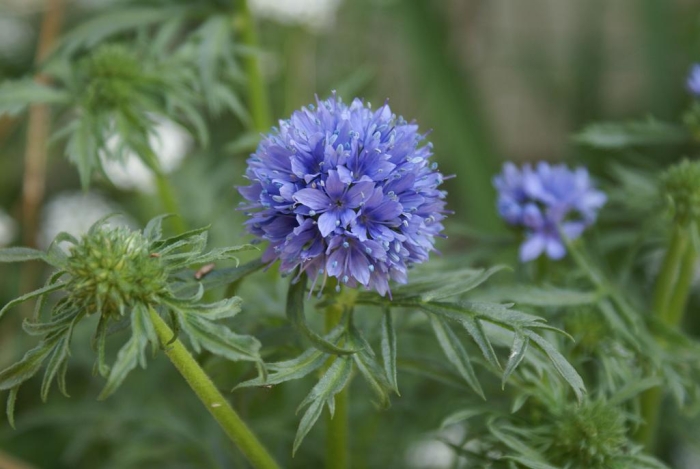Bluehead Gilia
(Gilia capitata)
Bluehead Gilia (Gilia capitata)
/
/

parande
CC BY-SA 3.0
Image By:
parande
Recorded By:
Copyright:
CC BY-SA 3.0
Copyright Notice:
Photo by: parande | License Type: CC BY-SA 3.0 | License URL: https://creativecommons.org/licenses/by-sa/3.0 | Uploader: Parande | Publisher: Wikimedia Commons | Title: Gilia_capitata.JPG | Notes: {{Information |Description=''[[Glandularia gooddingii]]'' just off the Nipton-Searchlight road (Nevada state route 164) near the Wee Thump Wilderness, southern Nevada |Source=self-made |Date=12 May 2006 |Author= [[User:Stan Shebs|Stan Shebs]] |Permission= |

























































Estimated Native Range
Summary
Gilia capitata, commonly known as Bluehead Gilia, is an annual herb native to open woodlands, grasslands, and chaparral in the Western United States and Baja California. It typically grows to a height of 12 to 24 inches (30 to 60 cm) and is known for its spherical clusters of small flowers that bloom from late spring to early summer. The flowers range in color from white to pink, lavender, or light blue, and are particularly attractive to native bees and butterflies. The plant’s form is somewhat variable, with a thick stem supporting the inflorescences, and the stamens with white, blue, or pink anthers protrude slightly from the flower’s mouth, adding to its ornamental appeal.
Bluehead Gilia is valued for its drought tolerance and ability to thrive in poor soils, making it an excellent choice for xeriscaping and wildflower gardens. It is also used in restoration projects and as a border plant in naturalistic settings. This plant prefers full sun to light shade and requires well-drained soils. While it can tolerate some shade, flowering is best in sunnier locations. It is not known for having aggressive roots or being particularly prone to diseases. However, it is potentially invasive outside its native range, so gardeners should check local regulations before planting.CC BY-SA 4.0
Bluehead Gilia is valued for its drought tolerance and ability to thrive in poor soils, making it an excellent choice for xeriscaping and wildflower gardens. It is also used in restoration projects and as a border plant in naturalistic settings. This plant prefers full sun to light shade and requires well-drained soils. While it can tolerate some shade, flowering is best in sunnier locations. It is not known for having aggressive roots or being particularly prone to diseases. However, it is potentially invasive outside its native range, so gardeners should check local regulations before planting.CC BY-SA 4.0
Plant Description
- Plant Type: Herb
- Height: 0.5-2 feet
- Width: 0.5-1 feet
- Growth Rate: Rapid
- Flower Color: Blue, Purple, White
- Flowering Season: Spring, Summer
- Leaf Retention:
Growth Requirements
- Sun: Full Sun
- Water: Low
- Drainage: Medium, Fast
Common Uses
Bee Garden, Bird Garden, Border Plant, Butterfly Garden, Drought Tolerant, Hummingbird Garden, Low Maintenance, Rock Garden, Showy Flowers, Street Planting
Natural Habitat
native to open woodlands, grasslands, and chaparral in the Western United States and Baja California
Other Names
Common Names: Blue Field Gilia, Globe Gilia, Blue Thimble-Flower, Nadelkissen-Gilie, Kopfblütige Gilie, Gilie Capitée, Bollgilia, Gília
Scientific Names: , Gilia capitata, Gilia capitata var. achilleifolia, Gilia glandulifera, Gilia pallida, Gilia capitata var. alba, Gilia capitata var. regina, Gilia capitata var. glandulifera, Gilia capitata var. trisperma,
GBIF Accepted Name: Gilia capitata Sims